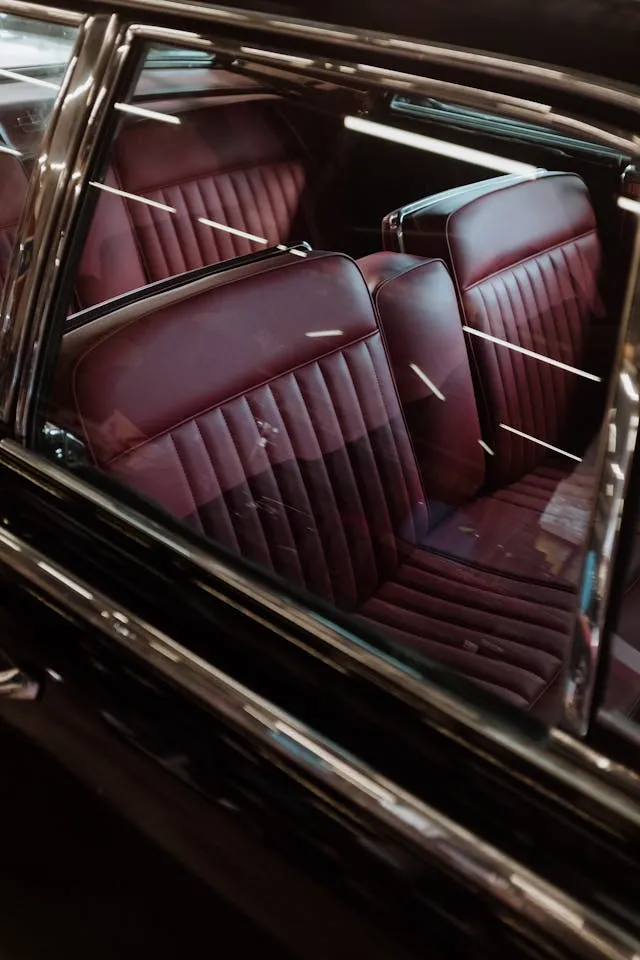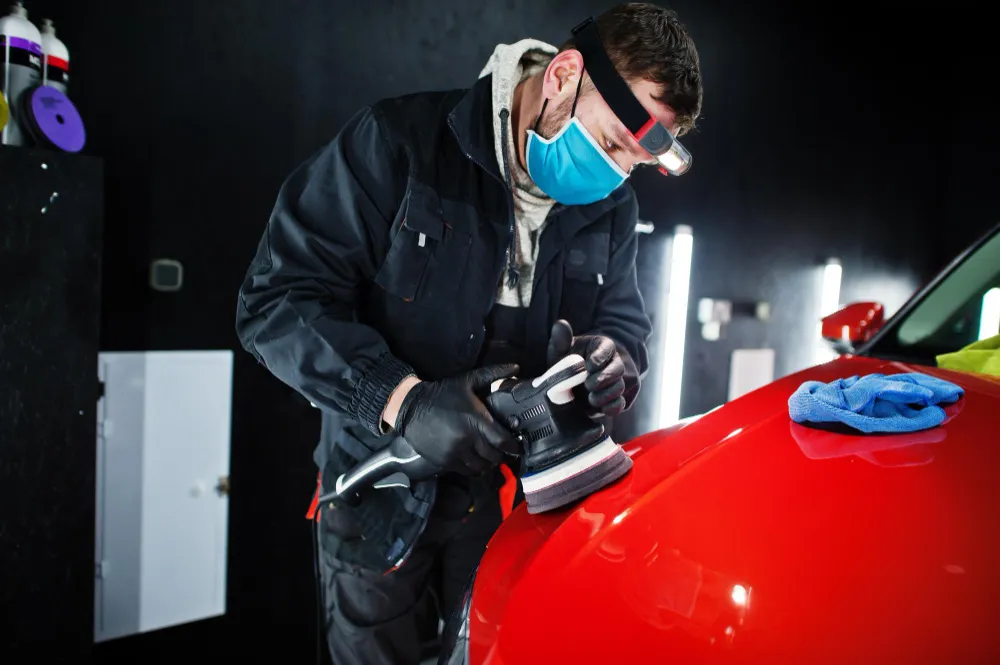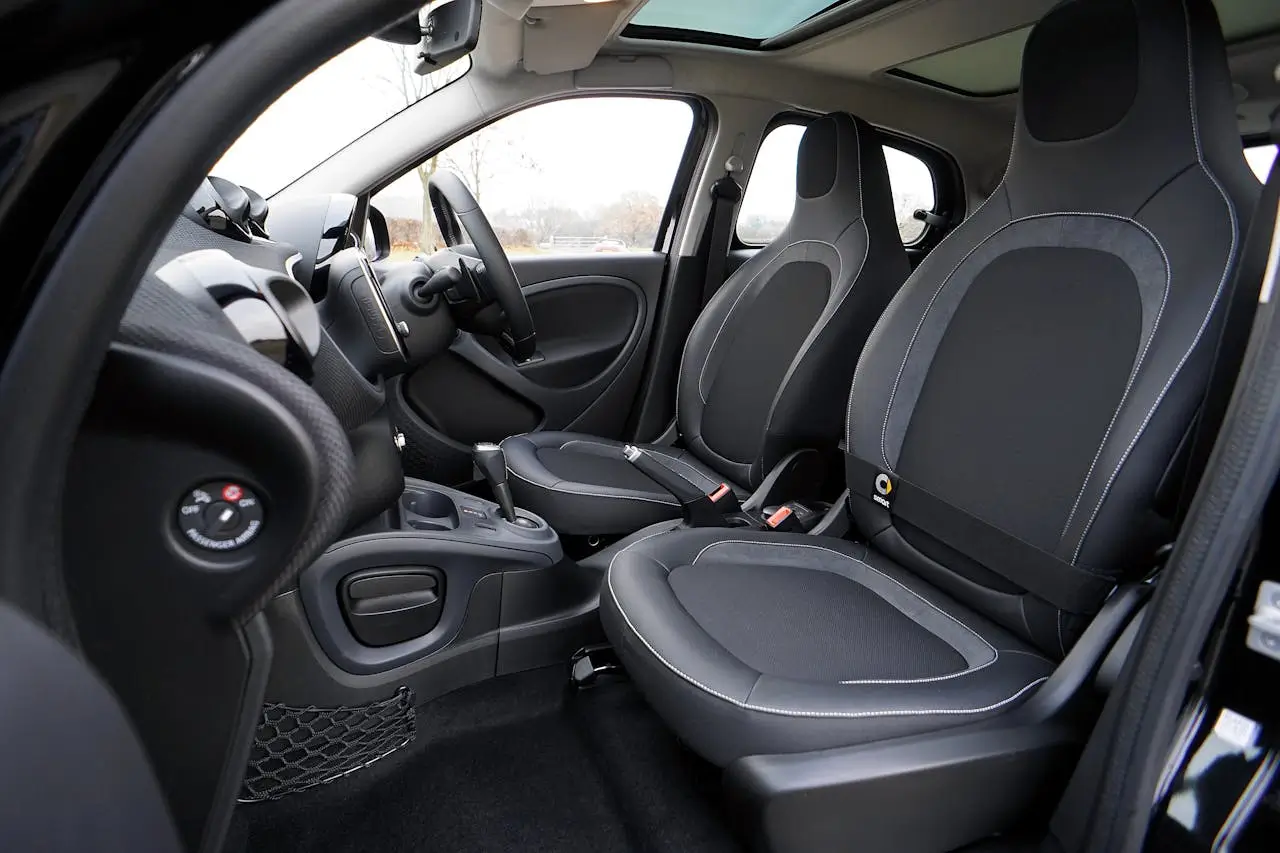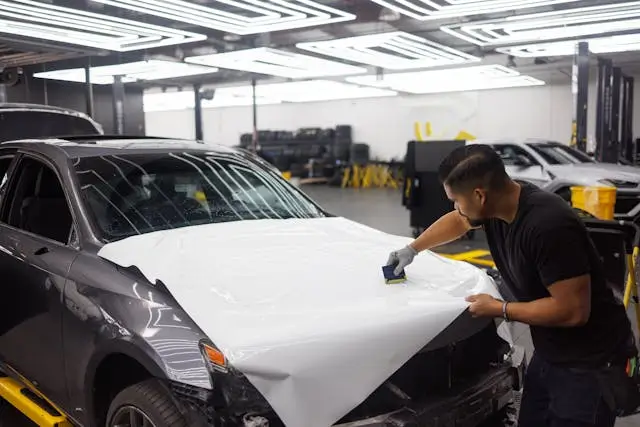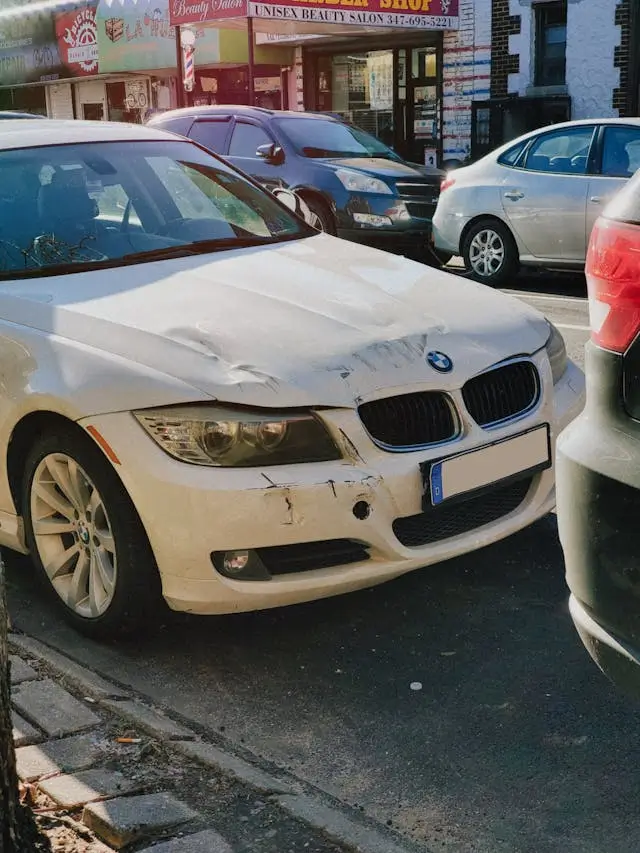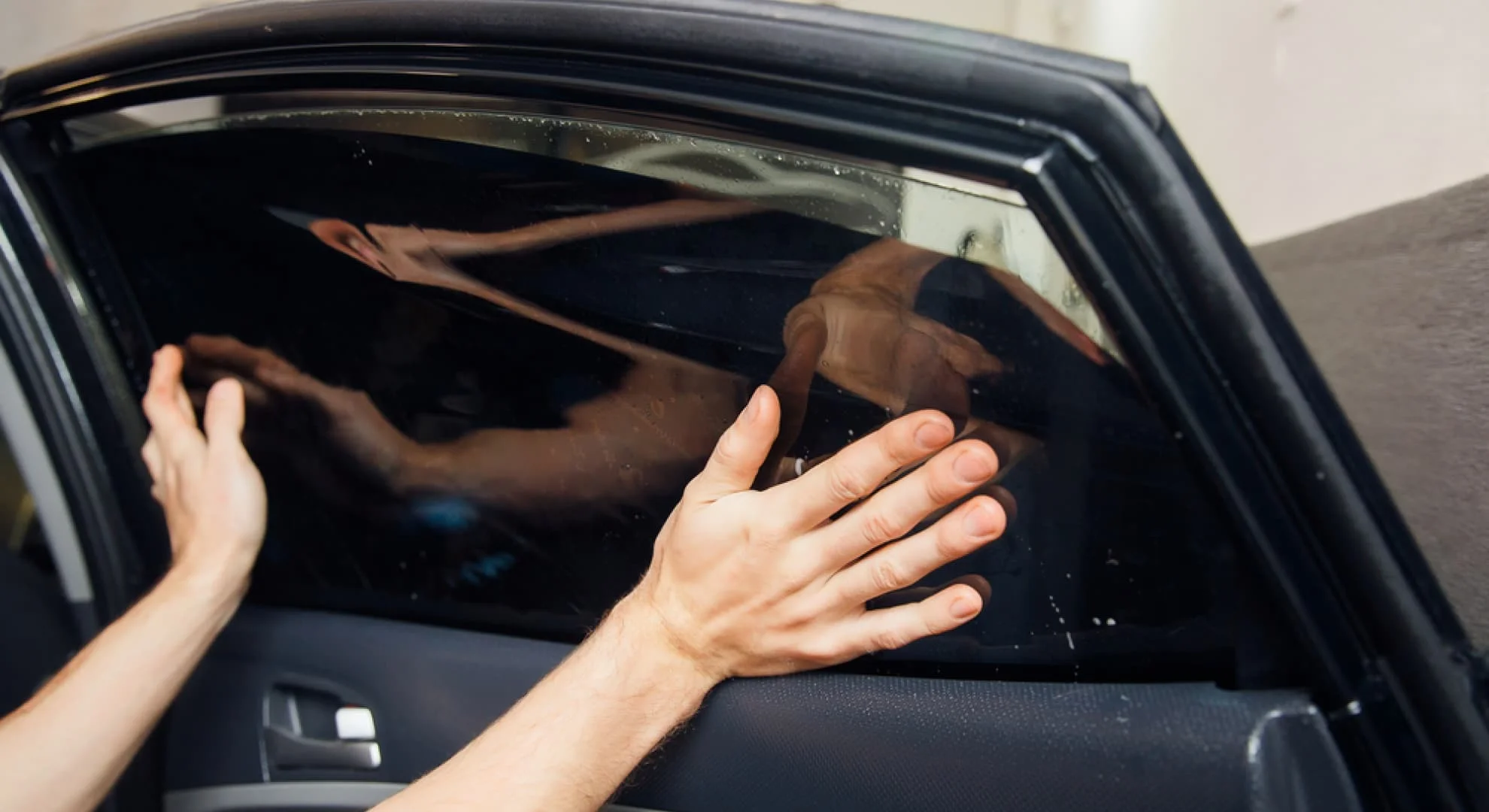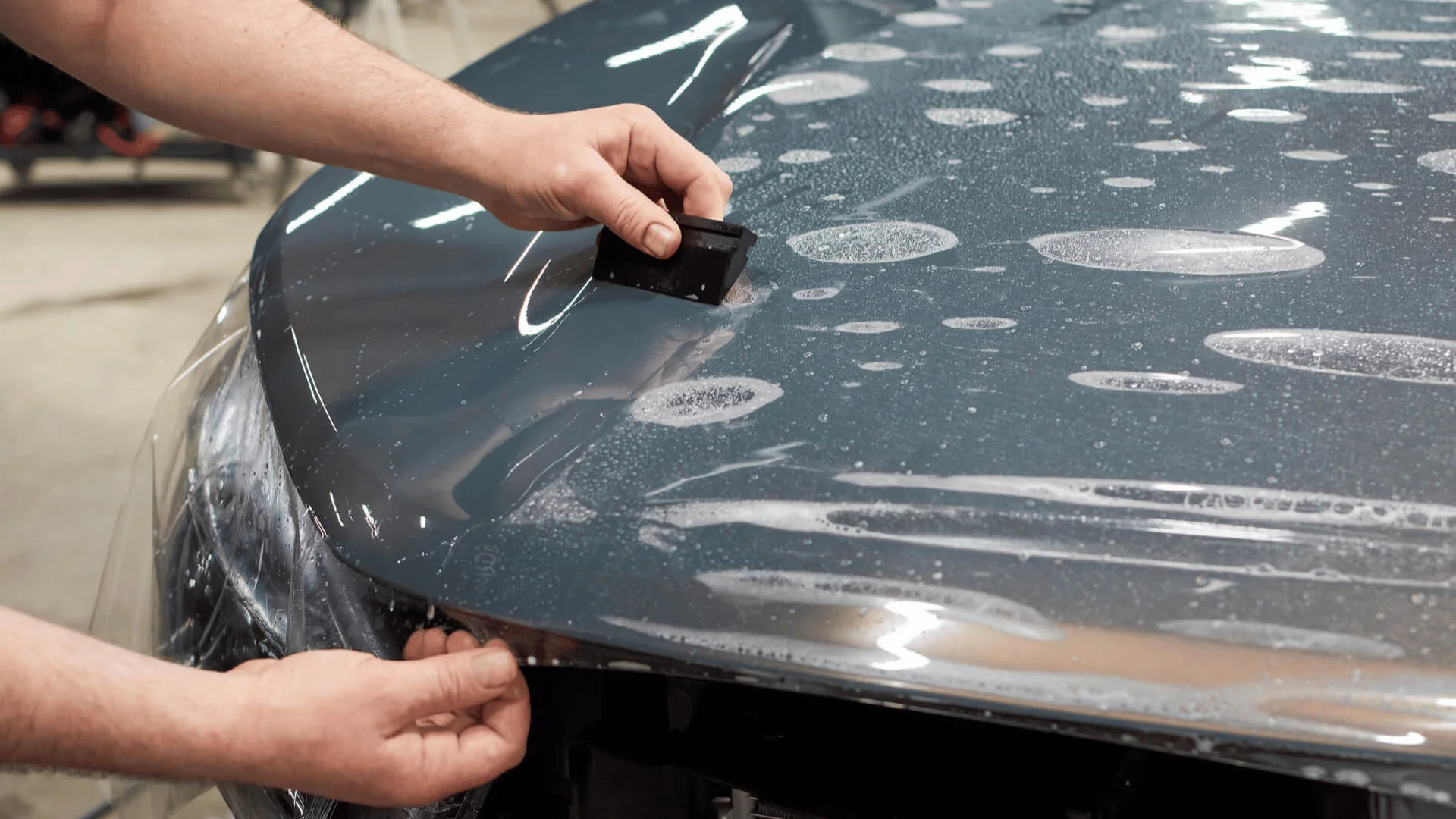Water spots are one of the most frustrating things to see after you’ve just cleaned your car. They can make a freshly washed surface look dull and neglected. Many car owners in Dubai struggle with these stubborn marks and often don’t realize how much damage they can cause.
Whether it’s the harsh sun or hard water from daily rinsing, the problem only gets worse if left untreated. That’s why understanding how to remove water spots from car surfaces before they become permanent is essential for protecting your vehicle’s finish.
If you’ve ever wondered why these spots keep coming back, or if they’re just a cosmetic issue, you’re not alone. This article will break down exactly what water spots are, why they form so easily in Dubai, and how they can harm your car’s paint and glass over time. We will also teach you how to get rid of water spots on your car!
What Are Water Spots and Why Do They Form in the UAE
Water spots are dried mineral deposits left behind when water evaporates from your car’s surface. They may look like harmless marks, but these spots can bond tightly to the paint and glass, making them difficult to remove.
In a place like Dubai, water spots are common due to the region’s intense heat, hard water, and frequent dust exposure.
1. High Mineral Content in Tap Water
Dubai’s tap water often contains elevated levels of minerals such as calcium and magnesium. When water with high mineral content dries on your car, it leaves behind white, cloudy rings known as hard water spots.
These spots are more difficult to remove and can cause long-term damage to the clear coat if not addressed promptly.
2. Extreme Heat Accelerates Evaporation
The desert climate means your car is frequently exposed to high temperatures. When water evaporates quickly under the sun, it leaves behind any minerals that were present.
The faster the evaporation, the more concentrated and visible these spots become. This is especially problematic during mid-day washes or when rinsing without drying immediately. For this reason, you have to choose between ceramic and PPF to protect against harsh weather.
3. Airborne Dust and Sand
Fine dust and sand particles are constantly present in Dubai’s air. When these mix with water droplets on your vehicle, they create an abrasive layer. As the water dries, it not only leaves mineral spots but also locks in those particles, increasing the risk of scratches and etched marks.
4. Poor Rinsing and Drying Techniques
Allowing rinse water to air dry or washing with unfiltered water can make water spotting worse. Many car owners skip thorough drying, not realizing that letting water sit even for a few minutes can result in visible marks that are hard to remove.
Using the wrong materials, like rough towels or tap water, can also contribute to the problem.
Recognizing the root causes of water spots in Dubai is key to stopping them before they ruin your car’s appearance. With the right care, you can minimize their impact and maintain a clean, glossy finish.
Types of Water Spots and Why They Matter
Not all water spots are the same. Some can be wiped away easily, while others require more aggressive treatment. Before we tell you how to get water spots off car, knowing the type of water spot on your car is important. It helps determine the safest and most effective way to remove it without damaging the surface.
Regular Water Spots
These are the most common and appear when clean water evaporates and leaves behind mineral deposits. They are usually white or slightly cloudy and sit on top of the paint or glass. Regular water spots can often be removed with a proper wash, especially if addressed early.
Hard Water Spots
Hard water spots form when water with a high mineral content dries on the car’s surface. In Dubai, this is a frequent problem due to the local water supply. These spots are more stubborn and can bind to the clear coat or glass. Over time, they can dull the finish and make the surface rough to the touch.
Etched or Mineral-Bound Spots
When water spots are left on the car for too long, especially under the sun, they can become etched into the clear coat. This is known as a chemical etching effect.
The minerals react with the heat and begin to corrode or embed into the surface. These are the most damaging type of water spots and usually require machine polishing or professional detailing to fix.
Understanding the differences between these types can save you time and prevent unnecessary damage. Each one calls for a specific approach, and using the wrong method can make things worse.
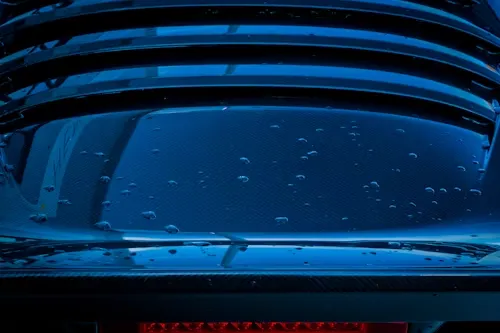
How Water Spots Damage Your Car’s Finish Over Time
Water spots may seem minor at first, but they can cause lasting harm to your vehicle’s exterior if ignored. What begins as a surface-level mark can evolve into a deeper problem that affects both the look and condition of your car.
Surface Dulling
When minerals sit on the paint for too long, they start to break down the clear coat. This creates a cloudy or faded appearance. The glossy finish that protects your car and enhances its color begins to lose its shine.
Etching into the Clear Coat
Hard water spots on car surfaces can react with heat and UV exposure, especially under Dubai’s intense sun. This accelerates chemical bonding between the minerals and your paint, creating microscopic pits. These etched marks are permanent unless corrected by paint-safe abrasives or polishing.
Accelerated Wear and Tear
The roughness caused by mineral deposits can trap more dust and grime, leading to faster buildup of dirt. Over time, this makes washing more abrasive and increases the risk of micro-scratches. The longer the spots stay, the more difficult they become to remove without causing further damage.
Even if they seem harmless, water spots degrade your car’s finish in stages. Early removal and proper care help prevent this gradual but serious damage.
How to Remove Water Spots from Glass Without Scratching It
Water spots don’t just affect your car’s paint. They also cling to windows, mirrors, and windshields. These spots can obstruct visibility and make your car look neglected. The key is removing them without scratching the glass. Now, let’s see how to get water spots off glass!
1. Use a Dedicated Glass Cleaner
Start with an automotive glass cleaner designed to cut through minerals. Avoid using household window sprays, as they may contain ammonia or ingredients not safe for tinted windows.
You can spray the cleaner directly onto the glass and let it sit for a few seconds to soften the mineral residue. Then, you can wipe using a clean, dry microfiber cloth in a circular motion. This works well for newer or mild spots.
2. Try a Vinegar-Based Solution
For harder stains, a 50/50 mix of distilled white vinegar and water can break down mineral deposits.
You can spray the solution generously onto the glass and allow it to dwell for one to two minutes. Then, you have to scrub gently with a microfiber applicator pad. In the end, rinse with clean water and dry with a lint-free towel. Do not use abrasive scrubbers or paper towels; they can scratch the glass, especially if dust is present.
3. Use Glass Polish for Etched Spots
If the spots won’t budge, use a glass polish designed for automotive use. These products contain mild abrasives that can restore clarity.
The first step is to apply a small amount of polish to a foam or microfiber applicator and rub it onto the glass in overlapping circles. Then, simply buff with a dry microfiber towel until clear.
Knowing how to remove water spots from glass the right way ensures clear visibility without risking scratches or damage.
How to Prevent Water Spots in UAE’s Climate
Start by washing your car during cooler times of the day, ideally early morning or late afternoon. This helps slow down evaporation and gives you more control when rinsing and drying.
Always use filtered or deionized water when possible, as regular tap water in Dubai contains minerals that contribute to hard water spots on car paint and glass.
After rinsing, dry the car immediately with a clean microfiber towel. Leaving water to air dry, even for a short time, will result in spotting. Pat the surface gently to reduce the risk of micro-scratches, especially if there’s still fine dust on the paint.
It also helps to protect your car with a layer of wax or paint sealant every few months. These products create a barrier that prevents minerals from bonding directly to the surface.
For more durable protection, consider ceramic coatings in Sharjah, which are popular in hot climates like Dubai. Using a glass sealant for your windows can also reduce the chances of water spots sticking to the glass.
A consistent cleaning schedule goes a long way in preventing buildup. Don’t wait until the car looks dirty. Light, frequent washes remove fresh deposits before they have a chance to settle and cause damage. When necessary, use a quick detailer spray between washes to keep the finish clean and smooth.
Taking these steps protects both the appearance and the long-term condition of your vehicle. Water spot prevention may take effort, but it’s far more effective than dealing with permanent etching later on.
Conclusion
Water spots are more than just an eyesore; they can cause lasting damage to your car’s paint and glass, especially in Dubai’s harsh climate. With the right care, you can prevent and remove them safely. But when spots become stubborn or etched, professional detailing is your best solution.
For expert water spot removal and long-term paint protection, contact Monza Auto Care by emailing monzaautocare@gmail.com or calling +971 65300005. Let our team restore your vehicle’s finish and keep it spotless, no matter the conditions.
Frequently Asked Questions
What is the safest way to get rid of water spots on car without damaging paint?
Can automatic car washes in Dubai cause more water spots?
Yes, particularly if they use untreated or hard water. Many rely on air drying, leaving mineral residues. These deposits are a common cause of water spots on car paint. Choose washes with filtered water and proper drying equipment to reduce risk.
How long does it take for water spots to cause permanent damage?
In Dubai’s heat, water spots can etch the clear coat within hours. Strong sun and hard water speed this process. If not removed quickly, some spots bond to paint, requiring polishing or professional correction for complete removal.
Is it okay to use household products like baking soda or lemon juice?
Can water spots return after being removed?
Yes, if causes remain. Hard water washing, drying in sunlight, or skipping protective coatings encourage recurrence. Use filtered water, dry thoroughly, and apply wax or sealant to prevent water spots from returning. Consistent maintenance is essential.

